
For centuries, we’ve associated the long, warm days of June, July, and August with enjoying leisure, appreciating nature, and spending time with loved ones. Cultures around the world are in the mood to celebrate, so festivals highlighting joy, abundance, and community often occur during these sunny months.
From Midsommar in Sweden to Inti Raymi in Peru, and the Aomori Nebuta Matsuri Festival in Japan (pictured above) to a citywide food fight in Spain, we’ve collected 10 of the world’s most interesting summer celebrations in this blog post. Scroll to learn more about each one.
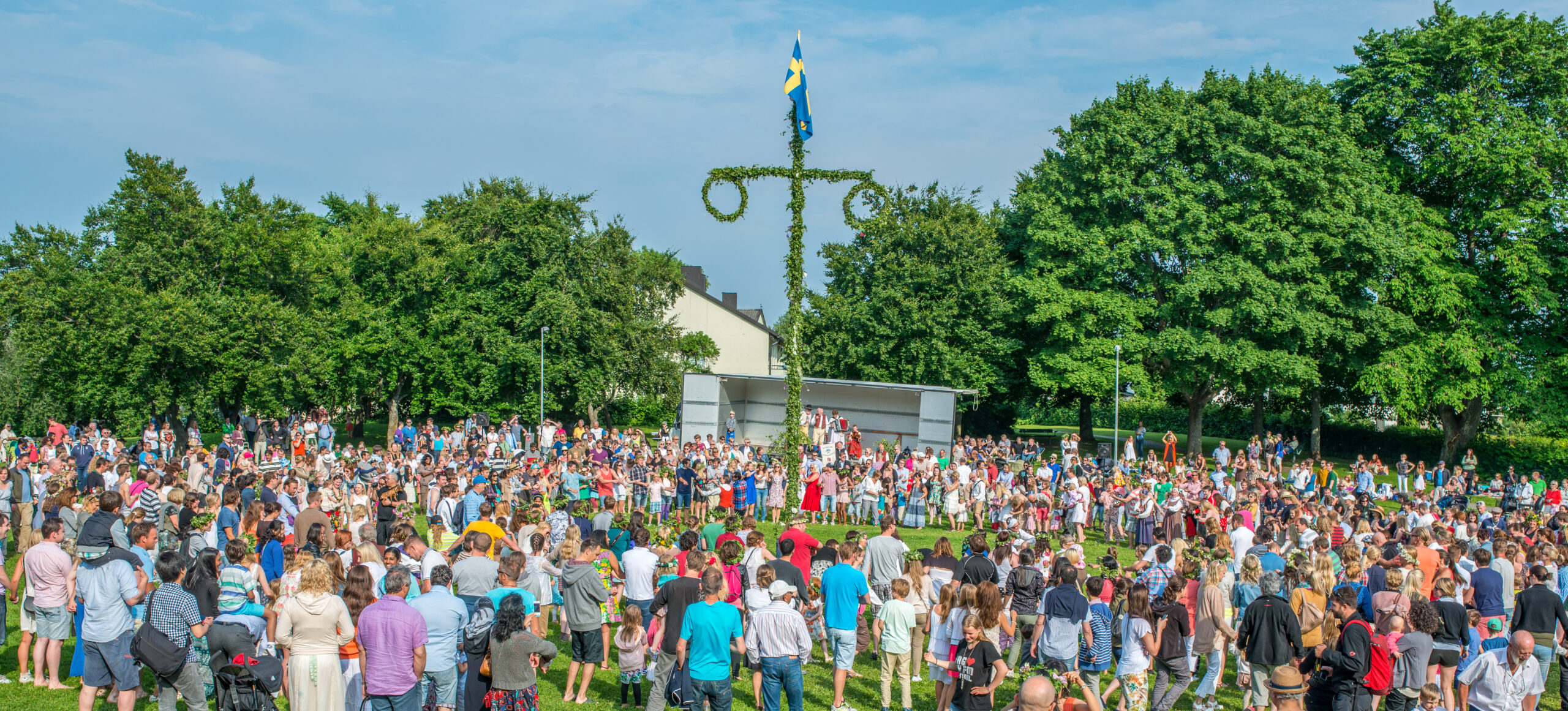
On the summer solstice, Swedes erect a flower-clad maypole and sing and dance around it. Image source: Bengt Nyman (CC BY 2.0)
First celebrated in the Middle Ages, Midsommar is one of the most well-known summer festivals. Swedes once believed that the magic surrounding the summer solstice gave nature special powers, such as healing abilities. That’s why, even today, many Swedish Midsommar traditions involve plants, including the iconic raising of the flower-clad maypole.
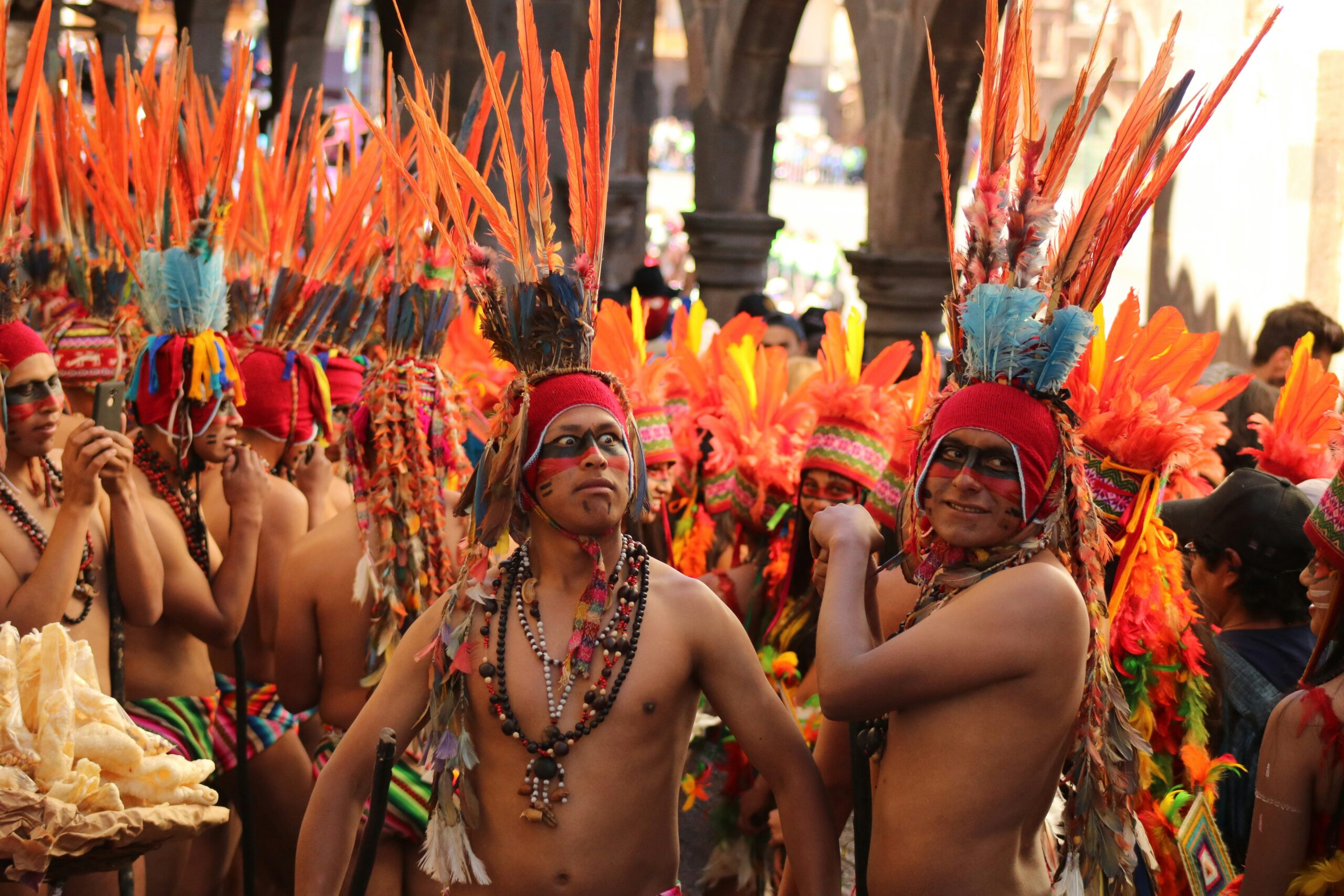
These Inti Raymi actors represent jungle tribes; legend says they assisted the Inca leader on his journey to Sacsayhuamán.
Though the Inca Empire is no longer, many Inca traditions remain – including Inti Raymi, a religious ceremony which takes place on the summer solstice. Once the most important holiday of the Inca Empire, Inti Raymi today is Peru’s second largest festival (after La Fiesta Candelaria), involving a reenactment of an ancient religious ceremony. Carefully chosen actors play the Sun King and his wife as they are escorted via procession to Plaza de Armas in Cuzco and then to the temple of Sacsayhuamán, where they perform a ritual to honor Mother Earth.
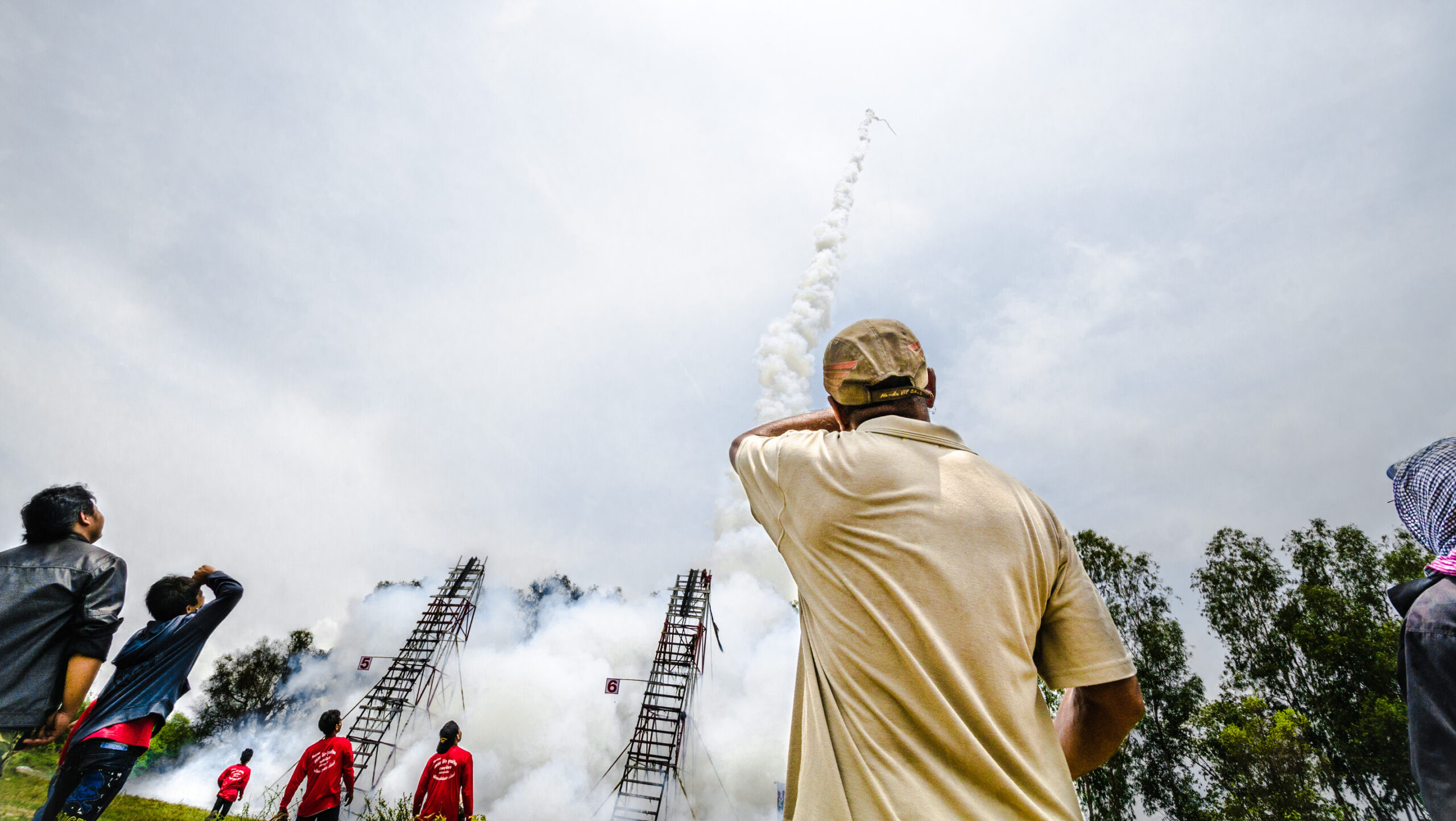
In Laos, Bun Bang Fai is finished off with a homemade rocket launching competition. Image source: Takeaway (CC BY SA 3.0)
Bun Bang Fai (Rocket Festival) takes place in Laos at the start of the wet season (typically in late May or June). All manner of festivities occur during the three-day celebration, which is meant to welcome the nourishing rains: music, dancing, parades, and, as the name implies, a homemade rocket launching competition. The rockets are judged based on height, distance traveled, and the beauty of the vapor trail, amongst other features.
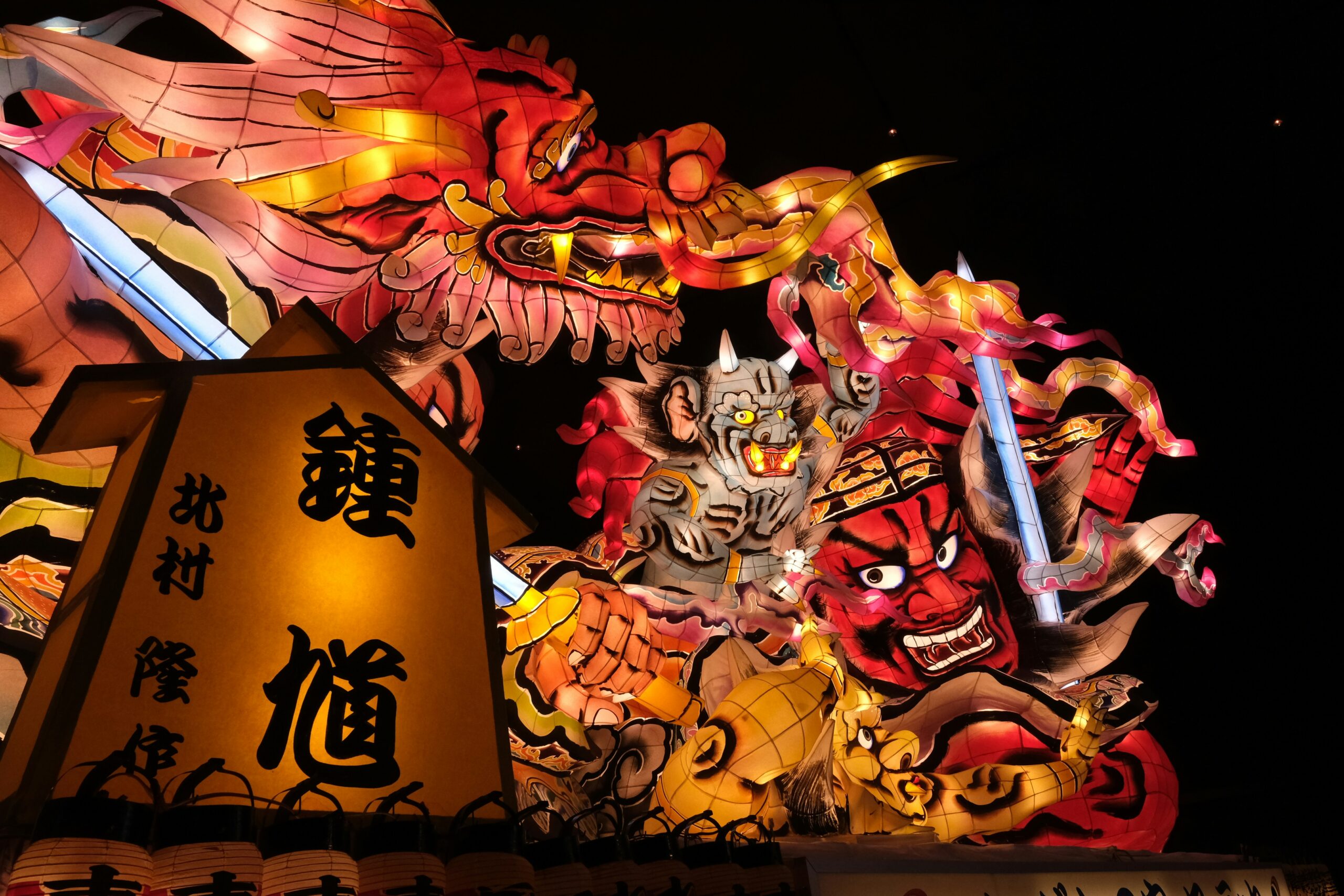
An example of a nebuta, a highly decorated lantern float that forms the centerpiece of the Aomori Nebuta Matsuri Festival.
One of the most famous festivals in Japan, the Aomori Nebuta Matsuri Festival is marked by large, dramatic lantern floats (called nebuta) depicting historical people, ancient warlords, and kabuki characters. The floats are paraded down the streets of Aomori, Japan, in early August to “wake up” sleepy souls in preparation for the fall harvest.
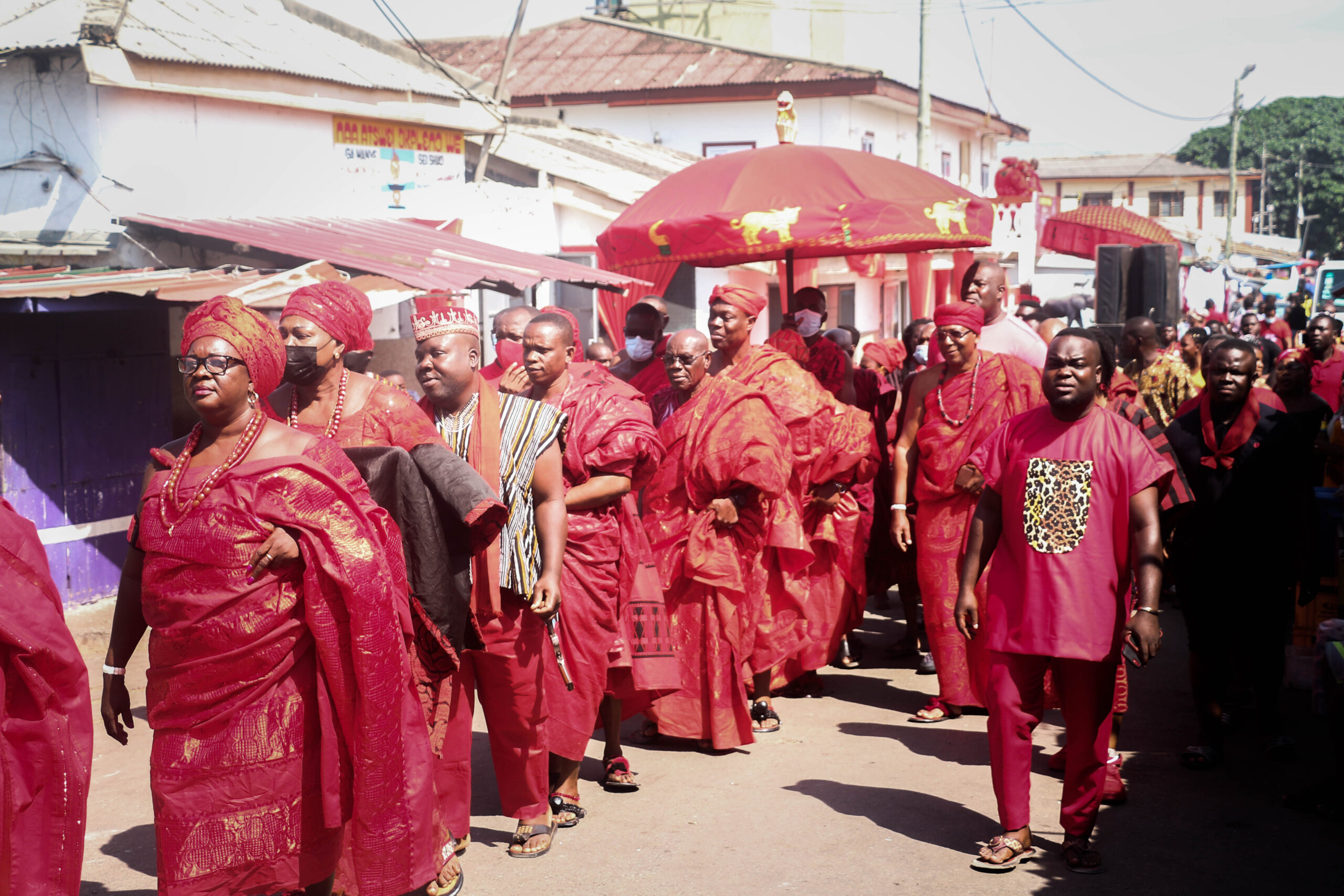
A village chief and elders walk to a Homowo ceremony dressed in traditional garb. Image source: Fquasie (CC BY SA 4.0)
Ancient legends passed down by the Ga people in the Greater Accra Region of Africa (primarily Ghana) tell of a deadly famine, when the rains ceased and crops failed to grow. When the famine finally ended, the Ga people hosted a celebration to taunt the hunger that once tormented them. And so, Homowo (meaning “to hoot/jeer at hunger”) was born. Many towns and cities in Ghana celebrate Homowo in various ways during the summer; traditions often involve chanting, marching, music, dancing, a silent feast (noise is believed to disturb the gods), the ritualistic planting of maize or millet, and more.
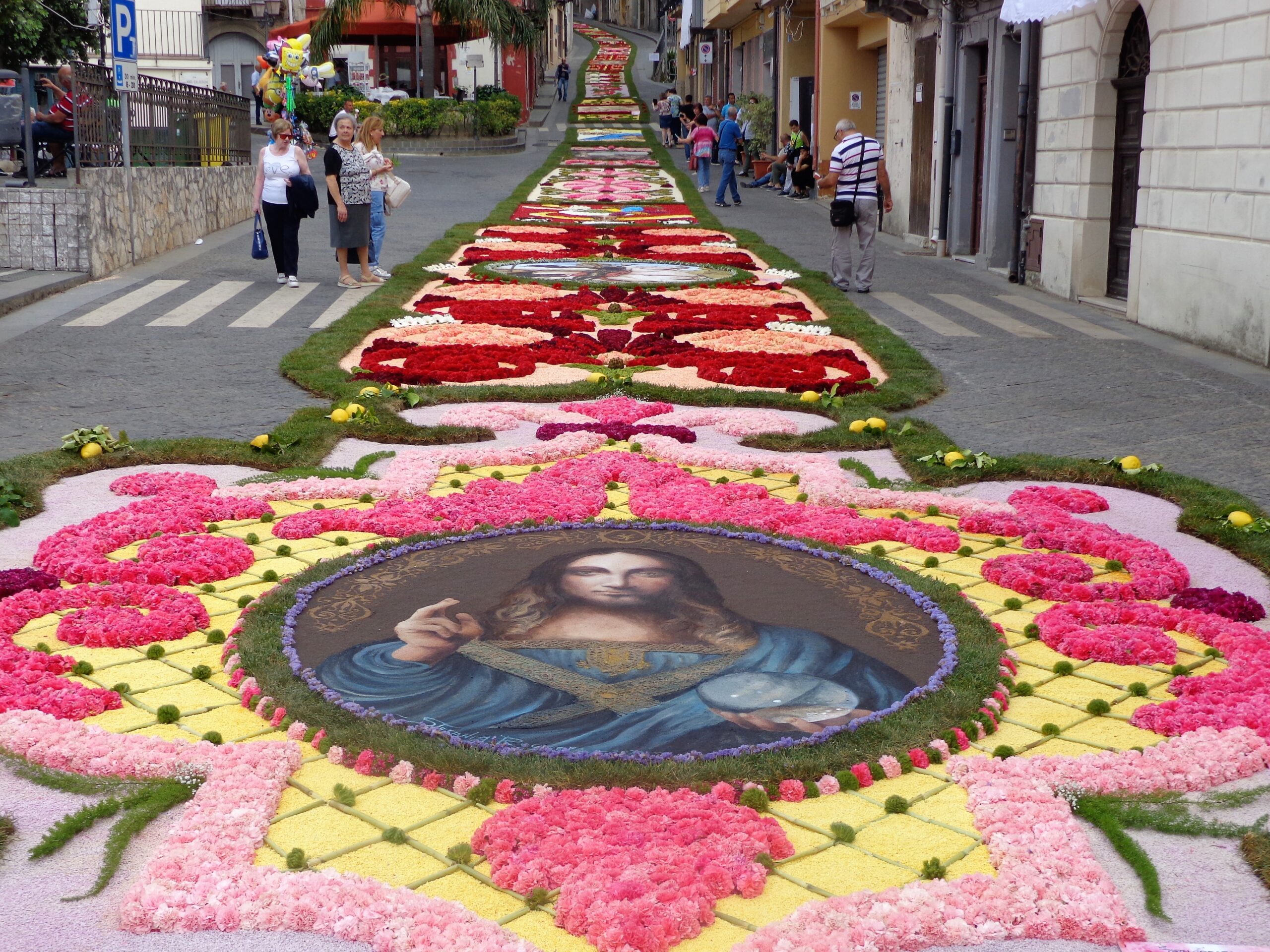
An example of the colorful, carefully designed flower carpets displayed throughout Italy on Corpus Domini. Image source: Effems (CC BY SA 4.0)
All over Italy, people honor the Corpus Domini (the Body of Christ) holiday during the first week of June. Traditions vary greatly by region, but one popular celebratory festival is Infiorata (Festival of Flowers). On the night of Corpus Domini, locals meticulously craft carpets of flowers depicting ornamental patterns and religious imagery and arrange them to decorate the streets that the Blessed Sacrament will be carried through the following morning. From humble beginnings as a tradition based around throwing flower petals during the Blessed Sacrament’s religious procession, Infiorata has grown into a nationwide celebration with thousands of attendees at multiple towns across Italy.

On the summer solstice, the sunrise perfectly aligns with the layout of Stonehenge. Image source: Clive Ruggles, International Astronomical Union (IAU) (CC BY 4.0)
Stonehenge is over 5,000 years old, but we still don’t know precisely why it was built. One thing we do know for sure: This ancient structure aligns perfectly with the sun on both the winter and summer solstices. On the sunrise of the summer solstice, the shadow of the northeast Heel Stone slices directly through Stonehenge’s main entrance, while the arches of the outer Sarsen Circle perfectly frame the sun. Visitors travel far and wide to experience a solstice at Stonehenge, whether simply for the view or to reap the mystical benefits some believe it provides.

On the summer solstice in Fairbanks, Alaska, amateur players take advantage of the “Midnight Sun” to play a 10:00 p.m. baseball game. Image source: John Shadle (CC BY SA 3.0)
Alaska’s largest one-day event, the Midnight Sun Festival, takes place on the summer solstice, when the “Midnight Sun Season” begins. During this period, the sun does not descend below the horizon, so the sky is lit 24/7. The holiday is celebrated with music, food, shopping, and more in downtown Fairbanks, Alaska’s second-largest city. Famously, amateur sportsmen also play a “midnight” baseball game every summer solstice as part of the celebrations.
The Royal Edinburgh Military Tattoo is an annual three-week-long celebration of Scottish culture that draws over 220,000 visitors from around the world. The show exemplifies pomp and circumstance, involving traditional pipe band performances and international cultural showcases. The first Edinburgh Tattoo took place at Edinburgh Castle in 1950 and was inspired by the 1949 performance of “Something About a Soldier” – Edinburgh’s first-ever public military tattoo.
Select departures of our Scotland: Highlands and Islands and Journey Through Britain tours include reserved seating at an evening performance of the tattoo; click the tour names to learn more.

During La Tomatina, people engage in a city-wide food fight. The weapon of choice? Tomatoes. Image source: Graham McLellan (CC BY 2.0)
On the last Wednesday of August, the town of Buñol, Spain, participates in what is thought to be the largest food fight in the world. As you may have guessed from the name, tomatoes are the projectiles of choice. The origins of La Tomatina are thought to date back to 1945, when a food fight started amongst a group of young spectators watching a parade. Now, visitors from across the globe travel to participate in this lighthearted yet admittedly chaotic tradition.
We hope to ring in the summer season with you on tour in 2026. To explore tours related to the destinations in this blog post, click on the images or country names above. Or, you can submit an online reservation request or call us and one of our Travel Counselors would be happy to assist you in finding the perfect trip for you.
Interested in reading about more holidays and celebrations around the world? Check out the other posts in this series:
10 Springtime Celebrations from Around the World
Autumn Celebrations Around the World
Getting in the Spirit: The World’s Most Interesting Winter Holidays
By using this website you are agreeing to our Cookie Policy.